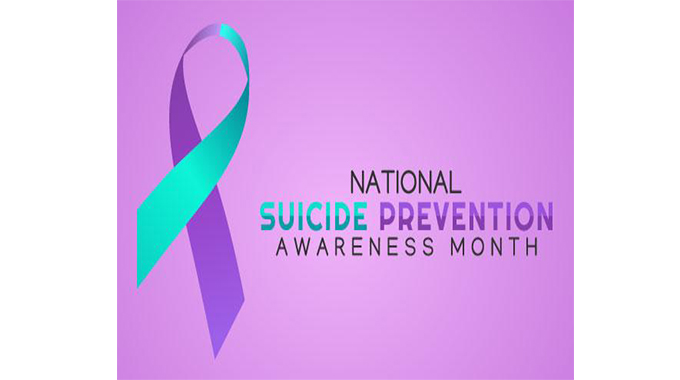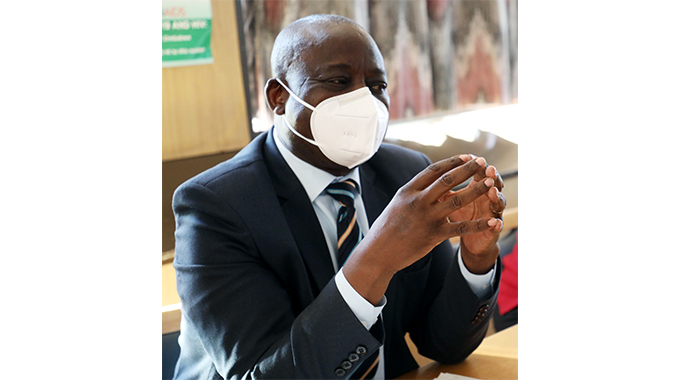Suicide not a normal response to stress

Dr Tatenda Simango
I HOPE I find you well and in good mental health.
September is International Suicide Prevention Month. There have been talks about mental health and suicide prevention on the national radio stations to help raise awareness of these conditions. However, there is still a stigma surrounding it and, with suicide rates increasing, it still means that the correct help is not reaching people on time, and we have a long way to go.
“I think suicide is sort of like cancer was 50 years ago. People don’t want to talk about it, they don’t want to know about it. People are frightened of it, and they don’t understand, when actually these issues are treatable.” — Judy Collins.
Suicidal thoughts can plague anyone regardless of age, gender, or social status. Commonly linked to depression, there is no fool-proof indicator of suicidal tendencies. Many people suffering from depression or suicidal thoughts, hide them quite well.
Suicide is when people harm themselves with the goal of ending their life, and they die as a result. A suicide attempt is when people harm themselves with the goal of ending their life, but they do not die. Parasuicide is the term used in the hospital setting.
It is important to note that suicide is not a normal response to stress. Suicidal thoughts or actions are a sign of extreme distress and should not be ignored. Everyone has a part to play in the awareness and prevention of suicide.
To illustrate this, the World Health Organisation has guidelines for journalists when reporting on matters relating to suicide.
Don’t:
– place stories about suicide in prominent positions in newspapers and on websites and don’t unduly repeat stories about suicide.
– use sensational headlines.
– use language which sensationalises or normalises suicide or presents it as a constructive solution to problems.
– explicitly describe the method used.
– provide details about the site/ location.
– use photographs, video footage or social media links that relate to the circumstances of the suicide.
– use “commit suicide” or “complete suicide”, as it implies criminality or a success respectively. Alternatively use “die by suicide” or “take one’s own life”.
– use “a successful suicide attempt” or “an unsuccessful, or failed, suicide attempt”. Do use “suicide attempt” or “death by suicide”.
Suicide does not discriminate. People of both genders, ages, and ethnicities can be at risk. Suicidal behaviour is complex, and there is no single cause. The main risk factors for suicide are:
– Depression, other mental disorders, or substance use disorder.
– Chronic pain.
– A history of suicide attempts.
– Family history of a mental disorder or substance use.
– Family history of suicide.
– Exposure to family violence, including physical or sexual abuse.
– Presence of guns or other firearms in the home.
– Having recently been released from prison or jail.
– Exposure, either directly or indirectly, to others’ suicidal behaviour, such as that of family members, peers, or celebrities.
– Stressful life events (such as the loss of a loved one, legal troubles, or financial difficulties) and interpersonal stressors (such as shame, harassment, bullying, discrimination, or relationship troubles) may contribute to suicide risk, especially when they occur along with suicide risk factors.
Suicides are preventable. Suicides and suicide attempts have a ripple effect that impacts on families, friends, colleagues, communities and societies. Much can be done to prevent suicide at individual, community and national levels.
A prior suicide attempt is the single most important risk factor for suicide in the general population. According to WHO — for each suicide, there are more than 20 suicide attempts. 77% of global suicides occur in low- and middle-income countries. Suicide is the fourth leading cause of death in 15-19-year-olds. Ingestion of pesticide, hanging and firearms are among the most common methods of suicide globally.
Suicide is one of the leading causes of death among 15–19-year-olds. Half of all mental health conditions in adulthood start by 14 years of age. For many young people, the teenage years are a time of exploring new opportunities and freedoms, but that can also be a time of anxiety about academic performance, relationships and the future. Occasional emotional distress is normal in adolescence, but for some young people, if the distress becomes long-lasting or overwhelming, it can lead to difficulty in everyday functioning and, in the most tragic cases, suicide.
Depression is also a major risk factor for teen suicide. Other risk factors for teenage suicide include:
– Childhood abuse.
– Recent traumatic event.
– Lack of a support network.
Availability of a gun.
-l Hostile social or school environment.
Exposure to other teen suicides.
– Change in eating and sleeping habits.
-Withdrawal from friends, family, and regular activities.
– Violent or rebellious behaviour, bullying, running away.
– Drug and alcohol use.
– Unusual neglect of personal appearance.
– Persistent boredom, difficulty concentrating, or a decline in the quality of schoolwork.
– Frequent complaints about physical symptoms, such as stomach pains, headaches, or tiredness.
– Rejecting praise or rewards.
When teenagers exhibit suicidal ideation (ideas) talk to the student in a private space, conveying your concerns, and actively listen to what they say without judgment. Encourage the student to speak to someone they trust, such as a parent or other trusted family member, adult or health worker at the school. Offer to speak with the person identified but do not do so unless the student agrees.
Almost everyone who attempts suicide has given some clue or warning. Don’t ignore even indirect references to death or suicide. Statements like “You’ll be sorry when I’m gone,” “I can’t see any way out,” — no matter how casually or jokingly said — may indicate serious suicidal feelings.
Samaritans — opposite Rainbow hotel, Bulawayo PO Box 806, BULAWAYO.
Contact by: Face-to-Face — Phone — Letter: Hotline: (9) 650 00 24 Hour service:
Next week we will continue the discussion on suicide prevention. Till next week stay safe.
l Dr Tatenda Simango can be contacted on [email protected], www.9thavenuesurgery.co.zw







Comments